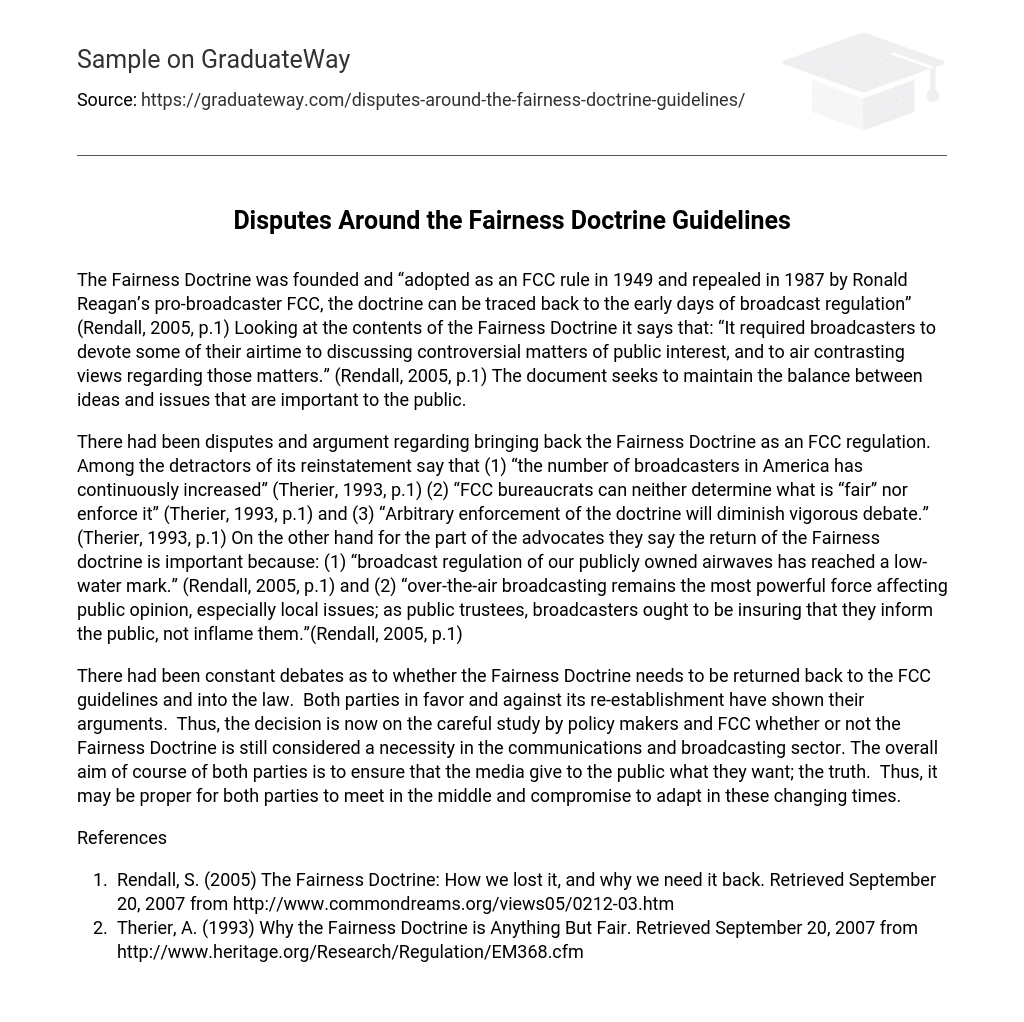The Fairness Doctrine was founded and “adopted as an FCC rule in 1949 and repealed in 1987 by Ronald Reagan’s pro-broadcaster FCC, the doctrine can be traced back to the early days of broadcast regulation” (Rendall, 2005, p.1) Looking at the contents of the Fairness Doctrine it says that: “It required broadcasters to devote some of their airtime to discussing controversial matters of public interest, and to air contrasting views regarding those matters.” (Rendall, 2005, p.1) The document seeks to maintain the balance between ideas and issues that are important to the public.
There had been disputes and argument regarding bringing back the Fairness Doctrine as an FCC regulation. Among the detractors of its reinstatement say that (1) “the number of broadcasters in America has continuously increased” (Therier, 1993, p.1) (2) “FCC bureaucrats can neither determine what is “fair” nor enforce it” (Therier, 1993, p.1) and (3) “Arbitrary enforcement of the doctrine will diminish vigorous debate.” (Therier, 1993, p.1) On the other hand for the part of the advocates they say the return of the Fairness doctrine is important because: (1) “broadcast regulation of our publicly owned airwaves has reached a low-water mark.” (Rendall, 2005, p.1) and (2) “over-the-air broadcasting remains the most powerful force affecting public opinion, especially local issues; as public trustees, broadcasters ought to be insuring that they inform the public, not inflame them.”(Rendall, 2005, p.1)
There had been constant debates as to whether the Fairness Doctrine needs to be returned back to the FCC guidelines and into the law. Both parties in favor and against its re-establishment have shown their arguments. Thus, the decision is now on the careful study by policy makers and FCC whether or not the Fairness Doctrine is still considered a necessity in the communications and broadcasting sector. The overall aim of course of both parties is to ensure that the media give to the public what they want; the truth. Thus, it may be proper for both parties to meet in the middle and compromise to adapt in these changing times.
References
- Rendall, S. (2005) The Fairness Doctrine: How we lost it, and why we need it back. Retrieved September 20, 2007 from http://www.commondreams.org/views05/0212-03.htm
- Therier, A. (1993) Why the Fairness Doctrine is Anything But Fair. Retrieved September 20, 2007 from http://www.heritage.org/Research/Regulation/EM368.cfm





